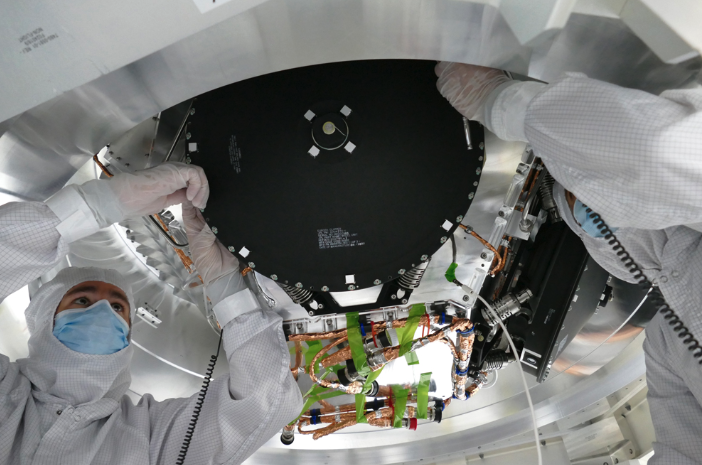Europa Clipper Mission: The 5 Billion Dollar Adventure To Look for the Possibility of Life
The Europa Clipper Mission is scheduled to launch on October 10th, 2024. Europa is one of the most favorable locations in the solar system to find a habitable environment.
The Europa Clipper is tasked with collecting the data to allow scientists to determine if there are locations below Europa’s icy crust capable of supporting life. It is the first mission to explore an Ocean World.

Table of Contents
Mission Overview
The Europa Clipper is one of NASA’s flagship planetary science missions. With a projected budget of five billion dollars, expectations are high. While expectations are high, the mission objective isn’t to find life. The mission objective is to determine if there are locations beneath the surface of the moon that could support life.
A different mission, based on the results of the Europa Clipper mission, would naturally move toward surface exploration.
The Europa Clipper will orbit Jupiter for four years. During that period, the spacecraft with perform over fifty Europa flybys. The Clipper will map more than 80% of Europa’s surface with a maximum camera resolution of three feet (one meter) per pixel.

Scientific Objectives
The Europa Clipper has three primary science objectives:
- Determine the thickness of the Moons shell and its interaction with the surface
- Is there liquid in the shell?
- Is there liquid beneath the shell?
- What’s the size and salinity of the ocean?
- Do objects (organic or inorganic) rise up to the top of the water from the depths of the ocean? Do objects drop to the ocean floor from the bottom side of the crust?
- What is the composition of the ocean?
- Does the ocean have the key ingredients to allow living organisms?
- Sustain living organisms?
- How did the moon’s surface features form?
- How did Europa’s surface features form?
- Has there been any recent activity on the surface? (Plumes or crust plates.)
Spacecraft Dimensions
The Europa Clipper is one of the largest spacecraft that NASA has ever built when the solar arrays are extended.
- Spacecraft Main body:
- 16 feet (5 meters) tall
- 100 feet wide (30.5 meters) wide when the solar arrays are fully extended.

Scientific Components
The Clipper contains nine scientific instruments with overlapping capabilities. Due to the high radiation levels from Jupiter, the instruments will be housed in an aluminum-titanium vault.
- Imaging System (EIS). Wide and Narrow-angle imaging. 5X higher resolution than previous images.
- Thermal Emission Imaging (E-Themis). Analyze infrared light to determine surface temperature. Looking for variants that indicate recent activity.
- Ultra Violet Spectrograph (EUVS). Analysis of UV data to determine
- Is there actually a water ocean?
- Surface and plume elemental composition
- Spectrometer (MISE).Infrared light analysis. Organics, salts, compounds, sulfates. Paints a picture of the moon’s geologic history.
- Magnetometer (ECM). Magnetic strength and orientation measurement. Will determine ocean depth and salinity.
- Gravity/Radio science Measure how the moon flexes under differing Jupiter gravities to indicate Europa’s internal composition.
- Radar– (REASON) ice penetrating to measure the thickness of the icy shell and search for water below the shell.
- Mass Spectrometer (MASPEX). Gas identification from the surface, atmosphere, and ocean.
- Surface Dust Analyzer (SDA). The speed and trajectories of particles entering the analyzer identify the particle’s area of origin on the moon. Individual molecules are ionized, and their mass and composition are identified.

What Happens After the Mission?
The next step following the Europa Clipper mission greatly depends on what the mission finds between 2030 and 2034 during the moon flybys If the mission finds that Europa does in fact have an ocean and that the conditions are favorable for life, a new mission that includes a lander must be discussed.
A return trip to Europa to investigate life within the ocean would require both a rover and a submersible device. A method would need to be crafted, evaluated, and perfected to collect analysis specimens.
How would analysis be performed in a high-radiation environment? These are all questions for a later date. We first need to collect data from Europa and see what mysteries she’s willing to share with us.
